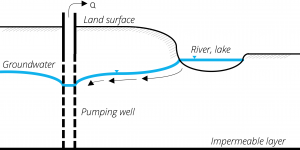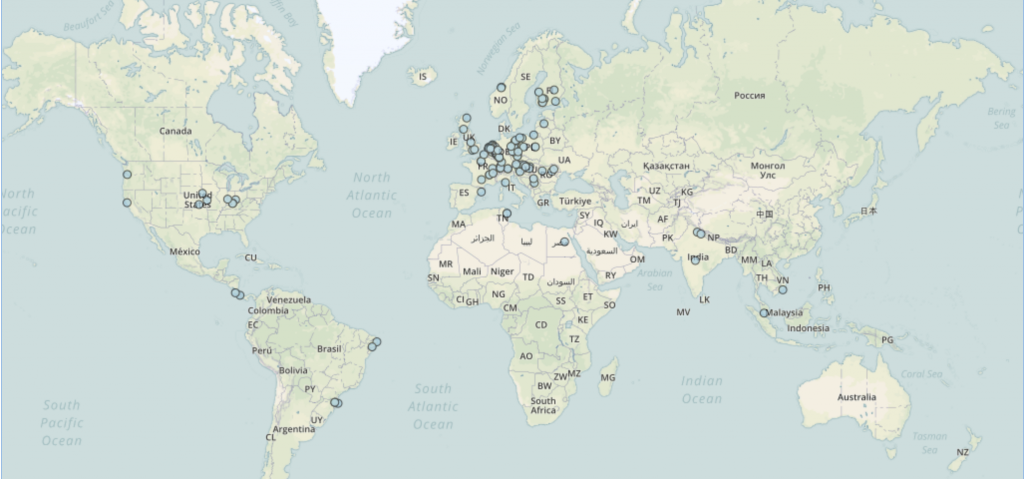
For river/lake bank filtration surface water from a river or lake is induced to infiltrate by pumping on a well gallery or line of wells parallel to the bank of the water source. Pumping at the gallery of wells lowers the water table adjacent to the river or lake, inducing water to infiltrate into the aquifer system. This process serves as a principal treatment step improving the water quality of the surface water. The passage of water through the river or lake bed and the aquifer removes dissolved and suspended pollutants and pathogens by chemical, physical and biological processes.
| Typical system capacity scale | Village – Town (≈104 m3/year – higher than 106 m3/year). |
| Geology | Unconfined sediments. |
| Topography | Floodplains, lake banks. |
| Soils | Sand, gravel. |
| Water source | River water, lake water. |
| Pre-treatment | Not required. Commonly riverbank filtration is used as a pre-treatment process. |
| MAR main objective | Improve water quality. |
| Relative cost | Medium-high. |
Advantages and disadvantages of the system (adapted from IGRAC, 2007):
Advantages
- Large quantities of water can be withdrawn.
- Pollutants contained in source water may be removed by filtration processes.
Limitations
- Complex design, construction, operation, and maintenance.
- Intensive monitoring of system performance is required.
- High potential for well clogging.
- High costs.
Case studies

Further information
References
- IGRAC. (2007). Artificial Recharge of Groundwater in the World.
- DEMEAU. (2014). Characterization of European managed aquifer recharge (MAR) sites – Analysis.
